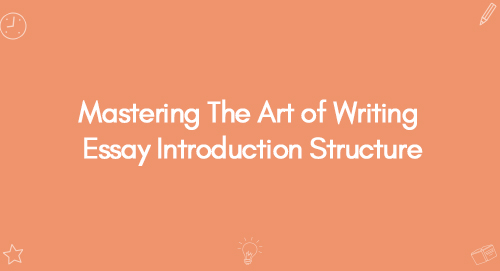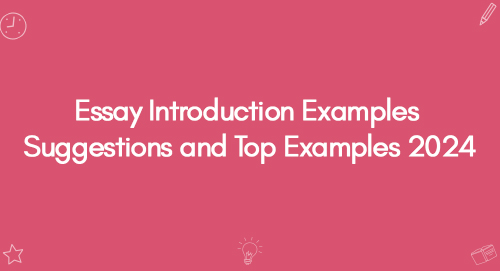University Assignment Examples
University Assignment Examples

Opinion Writing Prompts
October 17, 2023
Mastering the Art of Discursive Essays: Examples and Tips
October 19, 2023A University assignment is a task assigned to students by their Instructors or teachers to develop a deeper understanding of the subject material. University assignments allow students to strengthen their critical thinking, and decision-making abilities in various spheres of life. Students must look for quality University Assignment Examples and guidelines to enhance their learning on research methods, evaluating sources, and following proper citation format.
For the convenience of students, expert writers at Premier Dissertation have prepared a list of University assignment examples.
We hope that the guidance and examples in this post will assist you in getting speedy assignment assistance. Let’s get started by reviewing these samples.
- Psychiatry Assignment Example
- Human Nutrition and Dietetics Assignment Example
- Environmental Engineering Assignment Example
University Assignment Example: A Case Study
Here is a sample of the University assignment, following the proper formatting guidelines and instructions are as follows:
Title: Analysing the Impact of Catalytic Converter on Greenhouse: An Overview of Advancement in Catalytic Technology
Introduction
Catalytic converters are a standardised feature included in the automobile sector. These emission control devices can lower the effects of harmful gases in the air.
Background
The continuous increase in greenhouse gas emissions is a serious concern for human health and environmental sustainability. Internal combustion in car engines blasts harmful substances into the air including carbon monoxide CO, nitrogen oxides NOx and other harmful pollutants. In this paper, we will provide an overview of the Importance of catalytic converter technology in addressing environmental sustainability.
Analysis
Catalytic converters play an important role in reducing harmful emissions from the vehicle. This technology has become an essential part of the automotive industry. Inside the catalytic converter, there is a metal catalyst consisting of platinum, palladium and rhodium that acts as a catalyst with the help of which chemical reactions occur on the surface of the metallic structure, which minimise the impact of harmful emissions such as carbon monoxide, hydrocarbons, and nitrogen oxides.
Heimrich, MJ., 1996. Diesel NOx catalytic converter development, in his journal published by the US Environmental Protection Department, states that the catalytic converter plays a significant role in reducing Nitrogen oxides (NOx) by converting them into Nitrogen and oxygen with the help of a reduction process.
Solutions
Modern catalytic converters are “three-way catalysts”. When harmful gases enter the catalytic converter chamber, a chemical reaction occurs in the metallic structure, facilitating two important reactions: oxidation and reduction. In an oxidation reaction, carbon monoxide (CO) and hydrocarbons (HC) are converted into carbon dioxide (CO2) and water (H20) respectively. Whereas in reduction, Nitrogen oxide (NOx) is converted into Nitrogen (N2) and Oxygen (O) with the help of catalysts. By reducing the impact of harmful emissions, catalytic converters contribute significantly to protecting the environment and human health.
Conclusion
In conclusion, catalytic converters have a significant impact on reducing harmful emissions from vehicles. The Ongoing development and implementation of catalytic converters in automotive industries are necessary for cleaner and sustainable transportation in future.
References
Heimrich, MJ., 1996. Diesel NOx catalytic converter development
University Assignment Format
The University assignment format is determined by the subject, course level, and teacher preferences. In the assignment, proper format and guidelines must be followed. The most popular types of assignment format for University are shown below:
1. Essay
An essay is a piece of writing on a particular topic, concept, argument or story. It is a popular type of educational writing that may be used for informational purposes, idea analysis and storytelling. It generally consists of an introduction, a main body and a conclusion.
Title: Provide the essay title, your name, course and Professor name.
Introduction: Include a clear and brief introduction of a topic, and its significance with background, and provide a thesis statement that summarises the essay’s goals.
Body Paragraphs: A body paragraph is an essential part of an essay where you present and develop ideas, justifications or evidence to support your thesis statement with a literature review and findings.
Conclusion: Summarise the main points of the body paragraphs, restate your thesis, and conclude with a strong closing statement.
References: Provide a list of references that are cited in your essay with the guidance of (APA, AMA, MLA or Chicago) citation style.
Are You Looking To Review an Essay Example?
2. Case Study
A case study is an in-depth examination of a particular subject, event, person or organisation often used in academic and professional settings. The format for University assignment of case study usually include:
Introduction: Introduces the subject and the purpose of the case study.
Background: Add background details to determine the case’s context.
Analysis: Analyse the key issues with the study, and provide a structured analysis with evidence or data.
Solution: Provide suggestions for the identified issues and justify your recommendations based on the analysis.
Conclusion: Summarise the case study’s findings and key recommendations.
References: List all references according to citation style (APA, AMA, MLA & Chicago).
Are You Looking to Review a Report Example?
3. Research Papers
For effective analysis and research work, the research paper follows a standardised format depending on the requirements of the institution. The research generally includes:
Title: Provide the title of the topic, your name, co-author name(if applicable), Institution, and date of publication
Abstract: Summarise the concept of a research paper, including method, finding and conclusion.
Introduction: Introduce the research topic, describe the research hypothesis or query, include an overview of the literature that is relevant to the investigation, and identify the research aim and objectives.
Literature view: Summarise the recent research on the topic, discuss key findings and identify gaps or areas that need further investigation.
Methodology: Describe methods, techniques and procedures used to analyse the data, add detailed design, structure and data collection procedures, and explain the methods used in research and their implementation.
Analysis: Include research findings in an organised manner, analyse the data and interpret the findings.
Discussion: Explain the significance of research findings, discuss whether your findings differ or compare to the previous research, and examine the results and their implications.
Conclusion: Summarise the findings and implications, significance and contribution to the research field, and suggest the area for further research.
References: Provide a list of references cited in the research paper according to the order as they are cited in the research paper.
How to Write a Research Project?
4. Presentation
The general structure of an effective presentation includes the following:
Title Slide: Provide the title of the presentation, your name and the date of presentation.
Introduction: Start with the introduction and state the purpose and objectives of the presentation.
Outline: Include an outline of the presentation.
Data and Evidence: Present findings support them with evidence, and explain methodology and data collection sources.
Examples: Provide real-world examples and evidence in support of your presentation.
Conclusion: Summarise the main points of the presentation and restate the main objective to the audience.
How to Write an Assignment?
For well-structured and well-written assignments planning is essential. Here is a comprehensive guide for writing assignments:
-
- Understand the Assignment Prompt: Read the assignment prompt thoroughly and understand the topic's requirements. Make a note of any demand for formatting or citation style required.
- Research and Gather Information: Before starting the assignment conduct research on the topic and gather data from authoritative sources such as books, articles, journals and websites.
- Create an Outline: Create an outline to organise your ideas. This will help you effectively in organising your task.
- Create a Thesis Statement: Create a thesis statement or an argument around which your research topic will revolve.
- Cite Properly: Using external sources, cite them by using specified citation style (APA, AMA, MLA & Chicago) as instructed.
- Revise & Review: Review and revise your assignment for grammatical mistakes and punctuation. Ensuring that assignments follow proper formatting guidelines.
- Proofread: Finally Proofread your assignment for punctuation, grammar, and spelling errors.
- Submit Your Assignment: Once you go through all the above steps, ensuring the assignment is following proper format guidelines, submit your assignment according to the instructions.

















